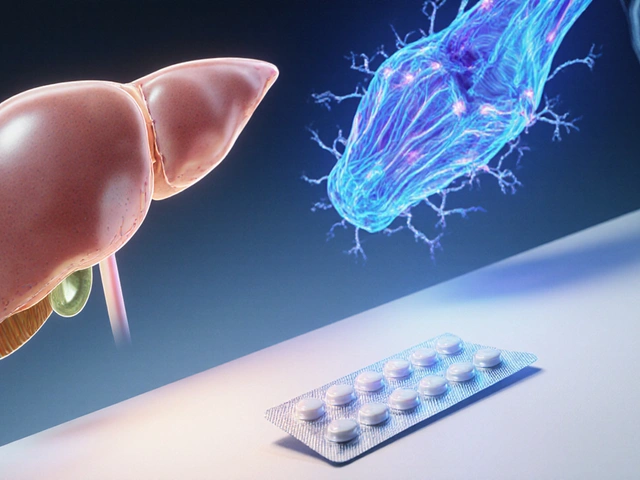Phenobarbital Therapy: Easy Guide to Using This Seizure Drug
Phenobarbital is one of the oldest seizure medicines, but many people still rely on it because it’s cheap and works well for many types of epilepsy. If you or a loved one have been prescribed phenobarbital, you probably have questions about how it works, how to take it safely, and what to watch out for. This guide breaks down the basics in plain language so you can feel confident about your treatment.
How Phenobarbital Controls Seizures
The drug belongs to a group called barbiturates. It quiets the brain’s nervous signals by enhancing the effect of a natural chemical called GABA. Think of GABA as a brake that slows down over‑active nerve cells. When phenobarbital boosts that brake, the sudden bursts that cause seizures become far less likely.
Because it works on a fundamental brain pathway, phenobarbital can help with many seizure types – from focal seizures that start in one part of the brain to generalized seizures that affect the whole brain. It’s also used sometimes for neonatal seizures and to prevent withdrawal symptoms in people stopping alcohol or other drugs.
Dosage Tips and What to Expect
Starting dose is usually low – often 1 to 3 mg per kilogram of body weight per day – and the doctor will increase it slowly to reach the level that stops seizures without causing too many side effects. Most adults end up on 60‑120 mg a day, taken in one or two doses. Consistency is key: take the pill at the same times every day, and don’t skip doses.
Blood level testing is common in the first few weeks. The goal is to keep the level between 10‑40 µg/mL, depending on your seizure type. Your doctor will tell you when to get the test and how often to repeat it.
Side effects can include drowsiness, dizziness, and memory trouble. These often improve as your body gets used to the medication. If you feel unusually sleepy, avoid driving or operating heavy machinery until you know how the drug affects you.
More serious reactions, like mood changes, rash, or breathing problems, need immediate medical attention. Keep a list of any new symptoms and share it with your doctor at each visit.
Alcohol and other sedatives can add up with phenobarbital, increasing drowsiness. It’s safest to limit or avoid alcohol while on this medication.
When it comes to pregnancy, phenobarbital crosses the placenta and can affect the baby’s development. If you’re planning a family, discuss alternatives with your neurologist.
Finally, never stop phenobarbital suddenly. Stopping can trigger severe seizures or withdrawal symptoms. If you need to change the dose, do it under medical supervision.
Phenobarbital therapy has helped millions control seizures for decades. By following dosage guidelines, monitoring blood levels, and staying aware of side effects, you can use this cheap, effective drug with confidence. Talk to your doctor if something doesn’t feel right – staying informed is the best part of any treatment plan.
Neonatal Seizures: How to Spot and Treat Infant Seizures Quickly
By Lindsey Smith On 27 Sep, 2025 Comments (8)

Learn how to recognize subtle and overt seizures in newborns, understand the role of EEG, and get clear guidance on first‑line treatments and emergency steps for neonatal seizures.
View More




